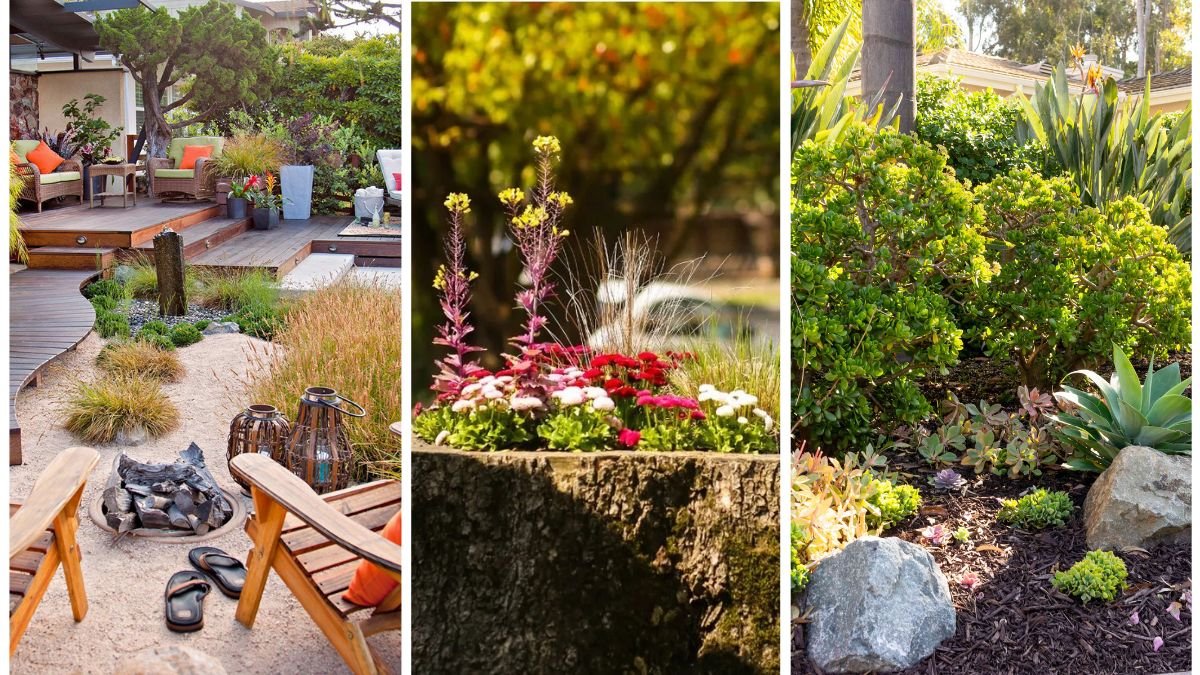In the world of home improvement, landscaping often feels like a massive endeavor requiring weeks of work, heavy equipment, and professional help. But the truth is, you don’t need a big budget or a crew of contractors to make a noticeable difference in your outdoor space.
In just a weekend—and sometimes even a single day—you can transform your yard with simple, creative, and affordable landscaping projects. Whether you’re looking to improve curb appeal, create functional outdoor zones, or enhance your garden’s aesthetic, these five easy landscaping projects deliver big results with minimal effort.
1. Build a DIY Garden Pathway
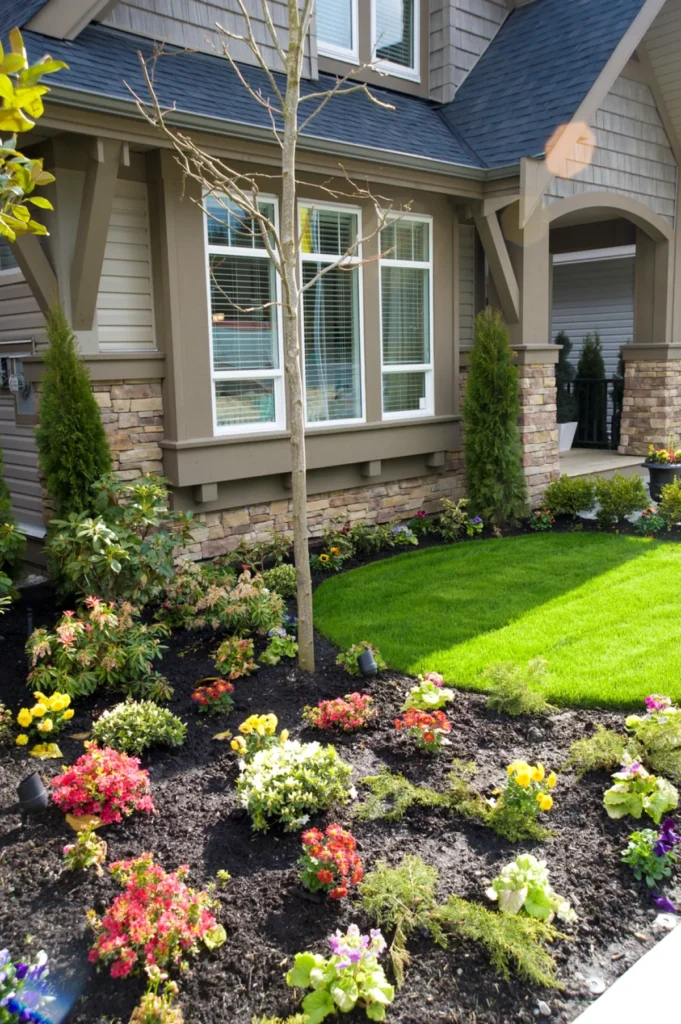
Estimated Time: 4–8 hours
Materials Needed:
- Pavers, stepping stones, gravel, or wood rounds
- Sand or landscaping fabric
- Shovel and rake
- Level
Why It Works:
A well-designed pathway adds both structure and style to your landscape. It guides visitors through your yard and connects key outdoor areas like patios, garden beds, or sheds. Even a short path can drastically enhance the flow and visual appeal of your garden.
How to Do It:
- Plan your route using rope or a garden hose to outline the path.
- Remove grass or soil to a depth of 2–3 inches.
- Lay down landscape fabric or a thin layer of sand to prevent weeds.
- Place stepping stones or pavers, ensuring they’re level and evenly spaced.
- Fill gaps with gravel, mulch, or ground cover plants like creeping thyme.
Design Tip:
Use curved lines for a natural, relaxed feel or straight lines for a modern, formal appearance.
2. Create a Mulched Flower Bed
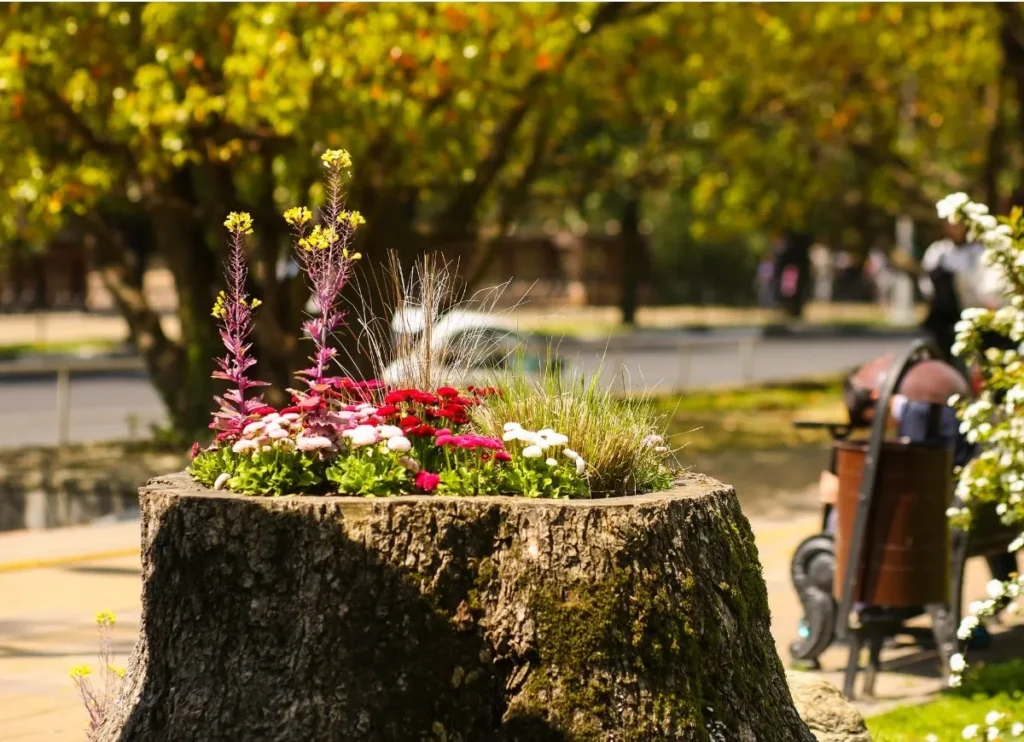
Estimated Time: 3–6 hours
Materials Needed:
- Mulch (wood chips, bark, or cocoa hulls)
- Plants (perennials, annuals, or shrubs)
- Edging material (optional)
- Garden tools (spade, gloves, wheelbarrow)
Why It Works:
Mulch beds are a simple way to refresh your landscape, reduce weeds, and retain soil moisture. With just a few bags of mulch and a few well-placed plants, you can frame your home or lawn with color and texture.
How to Do It:
- Choose a spot—along a fence, in front of the house, or around trees.
- Remove grass and weeds using a spade or sod cutter.
- Amend the soil if needed by adding compost.
- Plant your selections, focusing on native or drought-tolerant varieties.
- Cover the bed with 2–3 inches of mulch, keeping it a few inches away from plant stems and trunks.
Plant Suggestions:
- Low-maintenance perennials: Coneflowers, Black-eyed Susan, Daylilies
- Dwarf shrubs: Boxwood, Spirea, Hydrangea
- Herbs: Lavender, Thyme, Oregano
Design Tip:
Install edging with bricks or recycled materials for a polished finish and to keep mulch contained.
3. Install a Raised Garden Bed
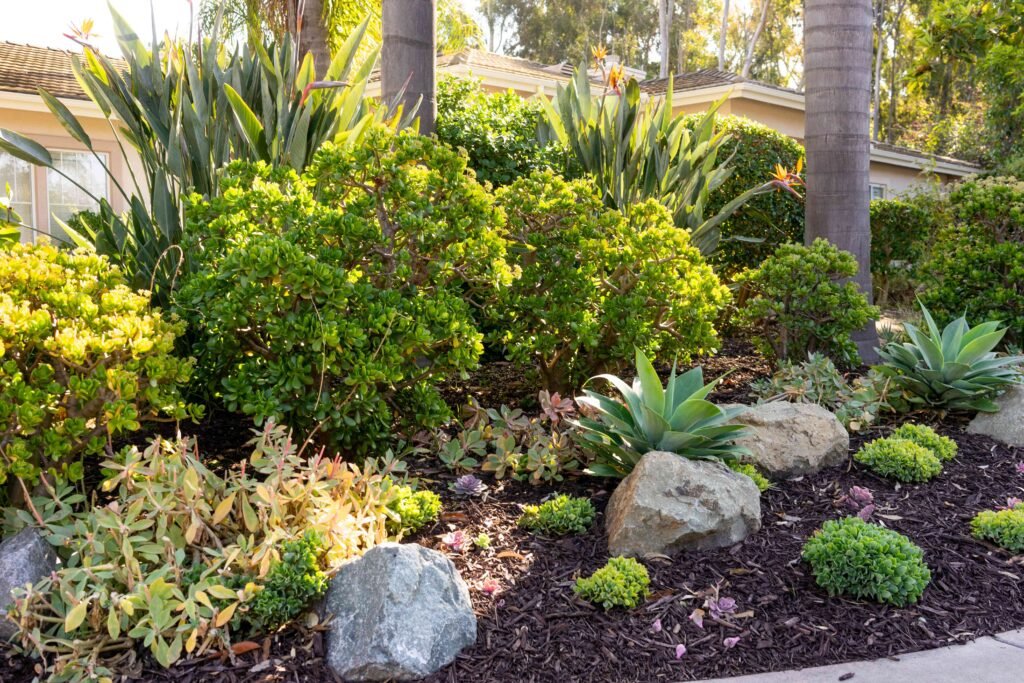
Estimated Time: 4–8 hours
Materials Needed:
- Wood boards (cedar or treated pine), screws, drill
- Soil and compost
- Seeds or starter plants
Why It Works:
Raised beds are functional and decorative, perfect for growing herbs, vegetables, or flowers. They improve drainage, reduce weeds, and make gardening more accessible—especially for beginners or those with limited mobility.
How to Do It:
- Build a rectangular frame (4×4 or 4×8 feet are common sizes).
- Place it on a level patch of ground with good sun exposure.
- Line the bottom with cardboard or landscaping fabric.
- Fill with a 50/50 mix of topsoil and compost.
- Plant your chosen crops and water thoroughly.
Great Crops for Beginners:
- Herbs: Basil, parsley, mint
- Vegetables: Lettuce, spinach, cherry tomatoes
- Flowers: Marigolds, nasturtiums (which also repel pests)
Bonus Tip:
You can build multiple smaller beds and separate them with gravel or wood chip paths for a neat, productive mini-garden.
4. Add Outdoor Lighting
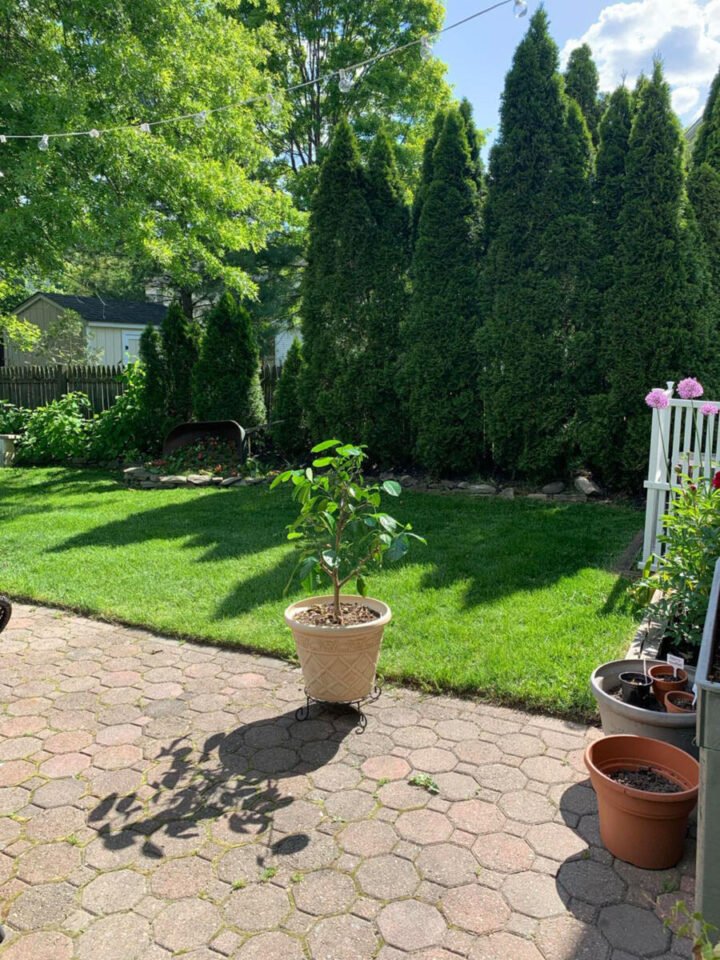
Estimated Time: 2–4 hours
Materials Needed:
- Solar lights, string lights, or LED fixtures
- Stakes or hooks (if hanging lights)
- Optional: timer or smart plug
Why It Works:
Outdoor lighting not only improves the safety and usability of your yard after dark but also adds ambiance and drama. With the availability of solar-powered and plug-and-play lighting, installation is easier than ever and requires no electrical experience.
How to Do It:
- Choose your lighting type:
- Solar stake lights for pathways
- LED string lights for patios or fences
- Lanterns or uplights for trees and focal points
- Install stakes or hooks, ensuring access to sunlight for solar fixtures.
- Test placement at night and adjust for desired brightness and coverage.
Design Tip:
Use a combination of warm and cool light tones to create depth. Layer different types of lighting—accent, task, and ambient—for a balanced look.
5. Build a Fire Pit Area
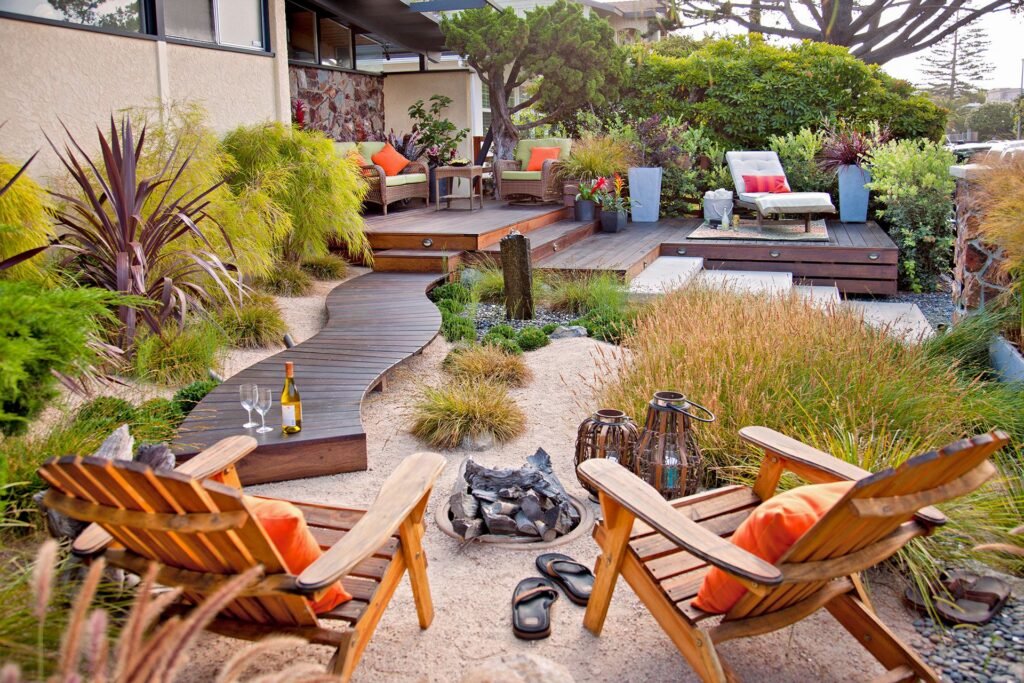
Estimated Time: 6–10 hours
Materials Needed:
- Fire pit kit or fire-safe bricks/stones
- Gravel or pavers for the base
- Shovel, level, tamper
- Optional: seating, logs, firewood rack
Why It Works:
A fire pit instantly transforms a backyard into a year-round gathering space. It creates a cozy, inviting focal point for entertaining, relaxing, or even roasting marshmallows.
How to Do It:
- Choose a level location, away from overhanging branches or structures.
- Mark out a circular or square area (typically 36–44 inches in diameter).
- Dig down 4–6 inches and fill with gravel or sand for drainage.
- Stack fire-safe stones or bricks to form a ring—about 12–18 inches tall.
- Level and secure the structure, and add seating around it with benches, logs, or chairs.
Safety Tips:
- Always check local regulations and fire codes.
- Use a spark screen to contain embers.
- Keep a water source nearby when in use.
Pro Tips for Weekend Landscaping Success
Regardless of which project you choose, a little planning goes a long way. Here are a few extra pointers to make sure your weekend landscaping projects are smooth and successful:
1. Set a Realistic Timeline
Pick a project that fits your schedule. Some can be done in an afternoon; others may take a full weekend.
2. Buy Materials in Advance
Make a list and shop before the weekend starts to avoid last-minute trips.
3. Check the Weather Forecast
A rainy or overly hot weekend can delay progress or make outdoor work uncomfortable.
4. Measure Twice, Cut Once
For construction projects like raised beds or fire pits, accuracy saves time and resources.
5. Clean Up as You Go
Keep your workspace tidy to avoid tools getting lost and reduce post-project cleanup time.
Conclusion: Big Impact, Small Time Investment
Landscaping doesn’t have to be an overwhelming, expensive, or months-long ordeal. With the right project, some preparation, and a weekend of effort, you can transform your outdoor space into something more functional, beautiful, and enjoyable.
Whether you’re adding structure with a garden pathway, building a productive raised bed, or simply enhancing ambiance with lighting, these projects are approachable for all skill levels. Best of all, they offer long-term value—increasing your property’s appeal, improving your quality of life, and giving you a sense of accomplishment.
So the next time the weekend rolls around, skip the binge-watching and pick up a shovel. Your dream landscape is only a few hours away.
